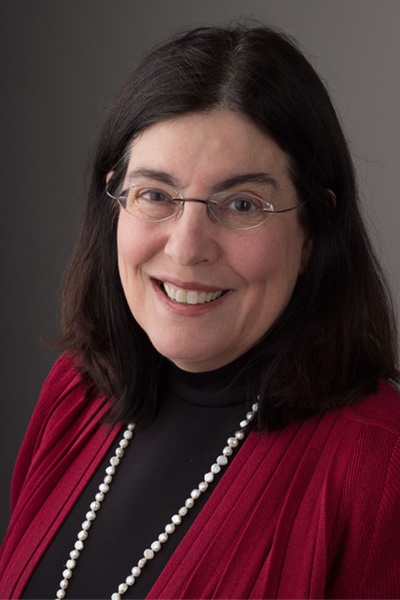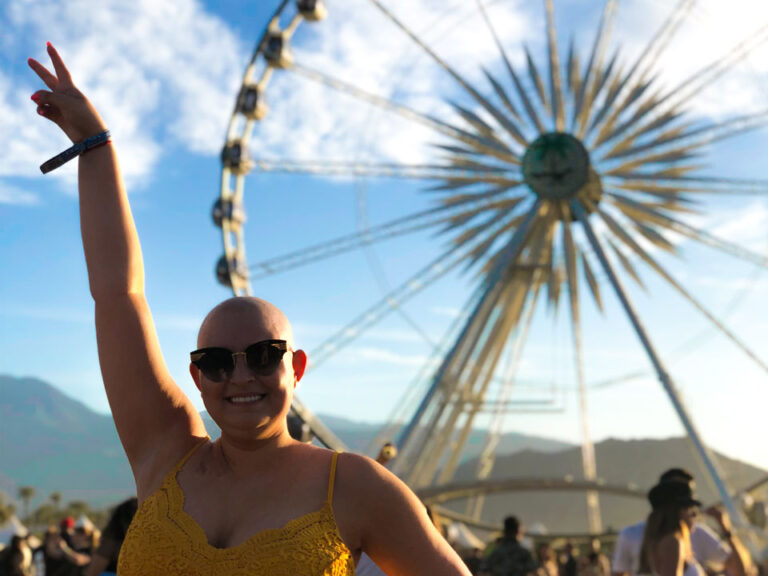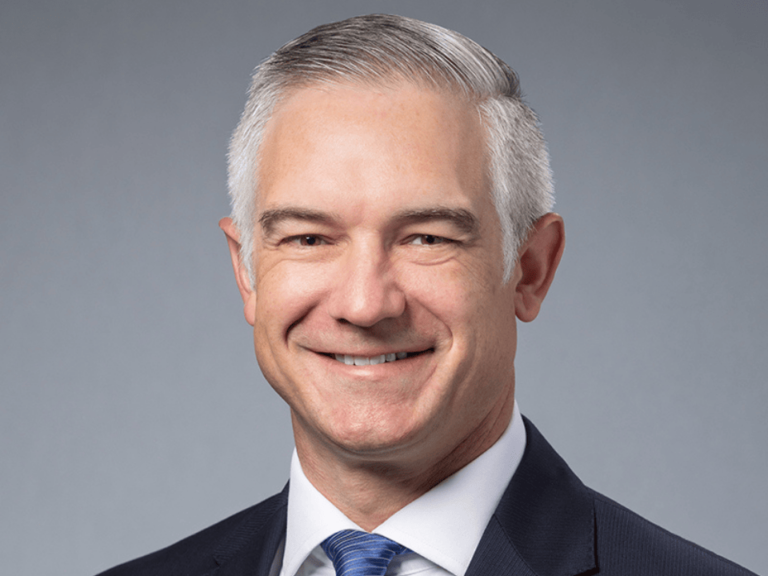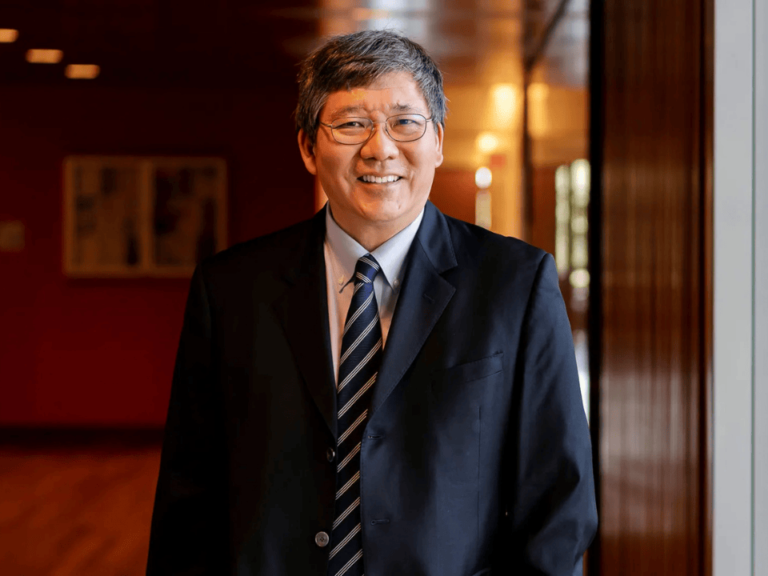The Tomosynthesis Mammographic Imaging Screening Trial, a massive randomized trial of early detection, is asking an important question:
Is digital breast tomosynthesis better than digital mammography in reducing development of advanced breast cancer?
“We’ve done a really good job of getting women in to get screened, and that’s good because we are undoubtedly saving lives through screening,” Etta Pisano, the PI of the study led by ECOG-ACRIN Cancer Research Group, said to The Cancer Letter. “The question is, are we further reducing breast cancer mortality the more intensively we screen?”
Pisano is also the chief research officer at the American College of Radiology a radiologist at Beth Israel Deaconess Medical Center and a professor in residence at Harvard Medical School.
TMIST seeks to stratify women based on risk of developing breast cancer, pinpointing subsets that would benefit the most from being screened, crate a biorepository of blood and buccal smears, and provide a glimpse into overtreatment that may occur in breast oncology.
“Women, if they are asked, and the equipoise question is explained to them, are willing to participate,” Pisano said. “When we explain that their daughters and granddaughters might be able to have a more individualized screening experience, women are willing to participate.”
The randomized trial (study EA1151; NCT03233191), which seeks to screen 165,000 women, has been accruing slowly. Altogether 9,000 women have been accrued since the trial began 18 months ago.
To speed up the process, NCI will soon be providing advances of up to $30,000 to some sites to hire research assistants who would serve as site coordinators.
The conversation with Pisano is the first in an informal series of interviews and guest editorials focused on TMIST.
Pisano spoke with Paul Goldberg, editor and publisher of The Cancer Letter.
Paul Goldberg: What’s the importance of the TMIST trial for breast cancer screening and public health?
Etta Pisano: We haven’t had a large randomized, controlled trial that establishes the value of modern mammography screening technologies compared to those of the past. The last time we had a screening study for breast cancer was in the 80s, which was before we understood the molecular biology of breast cancer or genetics as well as we do now—and before the modern era of adjuvant therapy.
Back in the 80s, we demonstrated that breast cancer screening does save lives. The technology has marched forward, and the treatments have marched forward. We’ve done a lot of work on individualized treatments, and we’ve done less on individualized screening. It’s time to go back and ask: by advancing the technology and finding more cancers, are we doing more good for women?
I think some radiologists believe that the more cancers we find, the more lives that are saved. That may not be true for very slow-growing tumors or tumors that cannot be treated effectively regardless of size. As our tools become more and more sensitive, the question now is, if mammogram technology advances allow us to keep finding more and more cancers, are we further reducing breast cancer mortality?
That’s the basic question.
A randomized study with a mortality endpoint, similar to the National Lung Screening Trial, would be the best design; however, in breast cancer we can’t do a mortality endpoint study. The natural history of breast cancer would make such a study too long and too expensive to be practical.
As an alternative to a study of mortality reduction, we designed TMIST to detect a decrease in advanced cancers in the patients screened with 3D relative to those screened with 2D technology.
The premise is that if the 3D technology is more effective in finding potentially lethal cancers earlier, it will prevent them from becoming advanced cancers. We know that advanced cancers are associated with higher mortality rates, and therefore fewer advanced cancers are likely to be associated with fewer cancer deaths.
In addition, we know that many women won’t ever get breast cancer. Maybe, based on their unique genetics and demographics and risk profile, they could do equally well with less screening. Undoubtedly, some women need more intensive screening. Some of the data we are collecting through TMIST will allow us to take a step toward evidence development around individualized screening strategies for women.
In diagnostic radiology, there’s a history and a culture of doing single-arm studies for diagnostics, like IELCAP, for example. Why was it important to run TMIST, which is a randomized trial, in this setting? Does it create logistical or cultural problems?
EP: It’s important to do a randomized trial because there are known biases related to single arm studies of outcomes related to screening that make them difficult to definitively interpret. Like therapeutic studies, randomization controls for many of these biases and will provide a better assessment of the impact of the newer 3D technology.
The overall premise of TMIST does create difficulties, because we’ve spent so much energy explaining to women the importance of screening.
We’ve done a really good job of getting women in to get screened, and that’s good because we are undoubtedly saving lives through screening. The question is, are we further reducing breast cancer mortality the more intensively we screen?
Well, you’ve anticipated my next question, but it’s still important enough to ask it directly: Can you describe why you and the investigators believe that there is equipoise here?
EP: Are we really affecting mortality? We haven’t answered that question. There are no studies that have definitely answered that question.
The most common version of tomosynthesis is actually tomosynthesis plus digital mammography. So, yes, you can find more cancers. But is it to the benefit of the woman?
Even the endpoint we’ve selected, which is reduction in advanced breast cancers, has not been studied. It has not been demonstrated that screening with tomosynthesis can reduce the advanced cancers in the population, compared with digital mammography.
We believe there is equipoise around this question.
The endpoints of the majority of papers on tomosynthesis (in single arm studies, some with historic controls) were set to determine the rate of cancers detected per 1,000 women screened.
Those studies showed that tomo finds more cancers than the older technology, digital mammography. Yes, we know that the newer technology can find more cancers. I know it sounds, for many people, to be so compelling that they want to replace all their old systems with these new systems. It sounds, perhaps, almost absurd, because we’ve been pushing screenings so much. Is it possible that we’re finding cancers and that those would show up in a year or two, and they are not going to affect the woman’s life to have found them earlier?
We’ve been saving lives for thirty years, so why study this now?
Tomo is more expensive and takes more time for the radiologist to interpret. In addition, the most commonly used tomo systems require a patient to undergo BOTH tomo and digital mammography. All of these factors make TMIST important.
Right, right, right, which is equipoise.
EP: That’s the equipoise question: Is it really affecting a woman’s life to find it earlier?
And you’re ahead of me again on my next question, but I still want to ask it, because, again, I think it’s really worth asking directly: Is there evidence that there is overdiagnosis coming from 2D and 3D mammography, and what will TMIST tell us about this overdiagnosis? Can overdiagnosis be seen in a single-arm study? I think the answer might be No.
EP: I’m not sure if the measurement of overdiagnosis can even be done in a two-arm study.
I think “overdiagnosis” is a very hard topic to study, because you can’t really tell which cancers are going to progress unless you watch them.
Presumably, overdiagnosis means you have to know absolute truth about which cancers are going to progress or not, and the ones that aren’t going to progress you’d call overdiagnosed. But we can’t tell what that is, so the estimates for overdiagnosis are always from modeling based on screening data, with assumptions made about what percentage of cancers will progress.
From an individual woman’s perspective, you can’t say her cancer was overdiagnosed or not. It’s really about the way a cancer is treated. If it’s a low-grade, less aggressive cancer, it should be treated less aggressively.
We have no way of knowing for sure right now, with current technology, that it’s not going to grow or that it will grow.
This study is not designed to measure overdiagnosis; it’s designed to tell us if the cancers we find with tomo that we don’t find with digital, are they the kind that are likely to progress, in general, or the kind that are not likely to progress, in general.
That is a hint at the issue of overdiagnosis, but, again, is more a surrogate for risk of mortality than a direct measure of overdiagnosis.
If we are finding the kind that are likely to progress, over time, we will see fewer advanced cancers in the population being screened with tomo, compared to those in the digital arm of the trial. If they are the kind that wouldn’t progress, over time we won’t see a difference in the two arms, because they’re not going to go away then.
They’ll still grow up and be advanced cancers. In other words, they’ll grow fast, and we’ll find them when they’re advanced.
It makes perfect sense. You get closer to at least estimating overdiagnosis, as opposed to just thinking about it as a logical construct.
EP: I think the modelers will help us estimate. The range of estimates of overdiagnosis for breast cancer are from zero to fifty percent, which is not very helpful to individual women, or to people who are interested in screening.
I personally think the numbers, from my read of the literature, are very low, maybe close to zero percent. But again, measuring overdiagnosis is not a specific aim of TMIST.
What, if anything, have we learned from lung cancer screening? You remember IELCAP, these massive single-arm studies. But it took NLST to change policy. And if you look through the journals, you will find single-arm studies that claim to address the same research questions as TMIST.
EP: This gets us back to the importance of studying more than cancer diagnosis. As you point out, the existing literature includes papers that show we diagnose more breast cancer with tomosynthesis.
What they don’t show is that this will impact breast cancer mortality. TMIST is a randomized study that is aimed at helping us understand if we are likely to have an impact on breast cancer mortality. Like the lung cancer situation, we believe it takes this type of randomized trial to get the kind of answers we need.
I think it’s really important that individual women will benefit. If we discover that some subset of women really need tomo, that they are more likely to have really aggressive cancers that are found with tomo, that’s going to be important information.
Right now, we don’t really understand, because we haven’t had big enough studies to figure out which women benefit most from which type of screening. I think we would like to know that.
And you will be able to find these subsets?
EP: We have a large enough population—165,000—so yes, we should be able to do that.
Could we talk about endpoints in a little more detail, because cause-specific mortality for breast cancer is not the primary endpoint here. What are the endpoints, and how did you arrive at those endpoints?
EP: The primary endpoint was arrived at by a consensus panel. We convened a group of people, all different kinds of experts on breast cancer, ranging from radiologists, pathologists, oncologists, medical oncologists, surgical oncologists, radiation oncologists, primary care physicians, statisticians, and epidemiologists, etc.
We asked them to design an endpoint that would likely predict breast cancer mortality within a shorter period of time, and the panel came up with the idea of a reduction in advanced cancer over time.
We’re measuring the numbers of cancers present in the two arms of the study—tomo versus digital screening—in the 4.5 years after entry. We’re comparing the numbers of advanced cancers in the two arms.
The hypothesis is that there will be fewer advanced cancers over time in the tomo arm of the trial, compared with the digital arm, because the tomo arm will find those cancers before they grow up to be advanced cancers.
In TMIST, screening for women at average risk begins at 45. Why 45? Why not 41? Why not 50?
EP: We recognized the controversy surrounding the most appropriate age for initiation of population-wide breast cancer screening. However, the age was NOT selected based on anyone’s opinion of when screening should be started.
We’re basically not studying screening below age 45 in this study, but that doesn’t mean there aren’t women who would benefit from screening below age 45.
The primary factor driving our sample size and thus our study design is the number of advanced cancers in the population. In order to have sufficient numbers of advanced cancers, we have to screen a lot of women without cancer.
Women in their early 40s definitely get advanced cancer, but if we included them in the population studied in TMIST, we’d have more normals relative to the number of cancers than in the older population. Advanced cancers are less frequent in the younger age groups than they are in older age groups.
And the same is true, by the way, for the cutoff of the study population at the age of 75. Once you get over 75, you mainly have indolent cancers, you have less aggressive and advanced cancers.
So, the age range we are studying was in large part a power issue in designing the study.
In post-menopausal women at average risk, screening is done every other year. Why not every year?
EP: We looked at the papers from the Breast Cancer Surveillance Consortium. They have published on advanced breast cancers and different risk factors. As you know, women don’t always come in every year—and so the Breast Cancer Surveillance Consortium has conducted a sort of natural experiment.
It’s not a randomized trial, but it’s been an observational study of women getting screened with mammography. And it’s from millions of mammograms, and in women of the age groups we are studying in TMIST.
From review of their papers, their data suggest that the postmenopausal women without specific risk factors who come in every other year have the same rate of advanced cancers as the women who come in every year for screening.
That suggests that there’s not a significant benefit to them or there’s a limited benefit to them if they get screening every year.
We’ve known for a while that there’s a group that benefits for every other year, but we haven’t had any way to learn which group should get it. People have always divided by age, but that doesn’t make any sense—biologically. Age 50 roughly correlates with menopause, but that, of course, is a poor measure for each individual woman’s risk profile.
From the Breast Cancer Surveillance Consortium data—and other papers as well, we can see that if women have dense breasts, if they’re on estrogen, if they have a family history or genetic risk, or if they have a prior biopsy of LCIS or atypia, those women tend to have more aggressive cancers, and so they will be screened annually in TMIST.
Whereas the women who don’t have those risk factors benefit equally well from every-other-year screening.
These data are from non-randomized studies, based on the behavior of millions of individual women. Not based on randomization, but based on when they decide to come in for screening and based on whatever reasons they may have to skip a year.
It seemed to those of us designing TMIST that it’s pretty safe for postmenopausal women without risk factors to go to every other year. However, the majority of women in TMIST will have annual screening, because most post-menopausal women have one or more risk factors, especially when you include dense breasts.
In fact, we estimate in advance that only about 30 percent of postmenopausal women will qualify to participate in the biennial screening rate.
As you know, many countries with organized breast cancer screening programs begin screening at age 50 and screen biennially.
Also, of course, the US Preventive Services Task Force recommendation is every other year for average risk.
EP: That’s true. Many of the societies though, including the American College of Radiology, advocate for annual screenings starting at 40, and so it’s still a real controversy in radiology and in the screening community—one that we on the trial team think is worth studying in TMIST.
There was also a very nice modeling study that was done with US Preventive Services Task Force recommendation some years ago that basically says the same thing.
EP: We’ve been struggling with whom to screen annually versus biennially. I feel like the literature is pretty compelling that there is a group of women who could have biannual screenings instead of annual.
But, having people accept that is a challenge, so we thought we’d try to demonstrate it in this study as well.
Well, that segues into the next question, which is how is the accrual going and what are some of the barriers to accrual?
EP: Before we opened the study, I was very worried that so many women have been sold on the benefits of tomo, and that would make it difficult to recruit. What we’re finding is that the recruitment rate, when women are approached to participate, is actually pretty good.
We’re getting women into the study. That’s very promising. So, the highest-accruing site, the University of North Carolina in Chapel Hill, is recruiting three to five women every day, and has been for over a year.
There are other sites as well that are doing that. But many of the sites are only recruiting one or two subjects a week. At that rate, we won’t be able to recruit our target of nearly 165,000 women very quickly.
We have 59 open sites at this point, and dozens more are in various stages of the onboarding process, but we’d like to have the active sites recruiting patients faster than they are. I think that as we work with sites to increase the research assistant (RA) effort on the study, we will able to recruit more quickly.
We need to ensure that participating sites know that, due to the sheer size of the trial—165,000 patients—they are best served by devoting a full-time RA to accrue patients to the study. TMIST reimbursement more than allows for this.
The number of people who can take part in TMIST dwarfs that of most treatment or industry-sponsored studies. TMIST reimbursement, over time, can more than pay for the cost of the devoted RA.
In fact, TMIST will soon provide an advance of up to $30,000 to select facilities to help immediately hire a research assistant to serve as an on-site coordinator. Once sites understand this more fully, we think patient accrual will continue to steadily increase as site recruitment already has.
Again, women, if they are asked, and the equipoise question is explained to them, are willing to participate. When we explain that their daughters and granddaughters might be able to have a more individualized screening experience, women are willing to participate.
Some sites have had a 30-, 40-percent acceptance rate of women who are asked to join, even sites where there was initial skepticism about their ability to recruit subjects because of how much tomo had been sold as the “best new thing” in their communities.
You still have to ask two or three women to get one, or even more than that, but that is very typical for any clinical trial.
But you have to actually present it, do a lot of explaining.
EP: You have to explain it, exactly.
That takes some time, and you’re explaining that there’s been overselling that has occurred.
EP: Well, it’s not that hard to explain. I think women are aware there’s a controversy about screening. Especially women in their 40s have heard, “Maybe you should wait to start.”
I think that there is some understanding that screening is not universally embraced. Plenty of primary care doctors explain to their patients that they don’t want them to start screening for breast cancer until age 50. So women are aware there’s a controversy.
The trial is well funded in terms of the amount the sites are paid to compensate them for their efforts. There are many women who have to pay out of pocket for their mammograms, so they probably aren’t getting mammograms as often as they should because of that. And we have a fund for uninsured women.
There is room for growth in this trial among sites that care for–or want to care for–uninsured patients. TMIST reimbursement empowers practices to offer screening to the underserved, expand participation in clinical trials and ensure that conclusions gleaned from TMIST can be applied across populations.
TMIST offers $500 for the submission of data on each uninsured woman recruited through the National Clinical Trials Network (NCTN) group affiliation (includes first screening exam payment). In subsequent years, the study allows $288 per study ($138.17 for performing exam + $150 for data submission for exam) for uninsured participants who qualify for charity care at that site.
The $30,000 advance NCI has authorized us to provide to select facilities to help immediately hire an RA to serve as an on-site coordinator can help some of these sites get up and running quickly.
So, you’re saying that women are intrigued by this research question?
EP: At the sites where people are putting in the effort to approach enough women, we’re recruiting well. And that’s what’s interesting. I was more worried about women saying, “No, I’m not interested because I know tomo is better.” That’s not what’s happening.
What we’re finding is many of the sites are just not fully aware that TMIST reimburses more than funds for putting a full-time RA in the clinic to recruit subjects. We are working to make sure they know that moving forward. The advance payment can greatly help that process and ultimately help each site to recruit three to five women a day.
Many of these centers have literally 100, 200 women a day coming in to be screened. So, if we approached 10 or 15 women, they could easily get three to five women per day to participate.
What are some of the strategies that you can use right now for improving accrual?
EP: We would like to increase the accrual at sites that are already open. There are a lot of women at screening centers who are potential subjects. We have to help sites to be able to approach more women about participation. We are working to make the recruitment process more simple and efficient.
We and the NCI are working on some creative approaches to help sites with the financing they need to open the study—that includes the $30,000 advance we spoke of.
We’re also actively recruiting new sites, because although we thought we would need 100, now we’re thinking 130 to 150 is more realistic. We are finding that many medical imaging facilities and hospitals are very interested in taking part in TMIST.
There are hundreds, if not thousands of imaging sites nationwide, with state-of-the-art equipment and the infrastructure in place to take part.
They just have not been asked—until now. We are guiding them through the onboarding process and expect many to come online throughout this spring and summer.
And probably patient groups would be nice to have on this.
EP: We do have a women’s advisory board, along with a recruitment committee now, and more patient groups are getting involved. We talk with patient advocates very actively.
There are literally, in the first 40 centers that opened already, over two million women being screened annually, so it’s not that there aren’t eligible women out there.
We know how to explain the trial to women, and there are sites that are recruiting plenty of women right now. So it’s really a matter of helping each site maximize its ability to accrue women to the trial. And that education is ongoing.
Would this require something of a culture change in radiology, so that it would encompass a greater appreciation for randomization?
EP: Well, I don’t think that’s the problem. Radiologists understand the importance of randomization and of this trial.
Most radiologists will say that a randomized trial is going to show what they believe—that tomo will find important cancers, compared with digital mammography.
I think that the problem has been there’s not been a willingness to fund large randomized trials in radiology. Radiologists have demonstrated a willingness to participate in randomized studies—look at NLST. Those sorts of studies have just not been commonly funded.
Another barrier is the study of healthy women instead of women with breast cancer. I mean, most of the money that goes into studying cancer goes into studying cancers that already occurred and developing methods for treating them.
Studies of screening—where the radiologists are the ones providing the screening tools—are few and far between. I think radiologists really appreciate being asked and funded to demonstrate, through randomized studies, their ability to impact patient lives.
But things have changed a bit since ACRIN ran NLST. With the merger of the imaging group, ACRIN, into the new NCTN, it is more difficult to directly engage the radiology groups for participation.
Participation has to come through the cancer centers. There are often complex relationships between the cancer center and their associate radiology groups that need to be navigated. Each site is different, requiring a lot of individual attention to make things work.
With limited resources available and the other pressures everyone is under, it can be difficult to engage all the necessary stakeholders to get a site operational.
Well, but this is a finite group–cancer centers. You can actually work through them.
EP: We’re also working with the community oncology programs—NCORPs; they have fixed budgets that they can spend, and so, they may not want to put this money into a study of screening. Success may be a matter of local priorities. For example, Carle Cancer Center, at an NCORP in Urbana, IL is one of our top-accruing sites.
But it’s not because the radiologists aren’t doing it, it’s because the money is flowing first to the cancer center and then the cancer center allocates the resources.
I can’t really attribute the lack of recruitment to the radiologists; your hypothesis doesn’t ring true to me. Plenty of radiologists and practices have stepped forward to participate.
How far behind are you in terms of targets?
EP: We have about 9,000 women in the study at this point.
What we had anticipated—three to five women per day at every site—can still get us to the level where we need to be very quickly, though.
We can still reach our accrual targets readily if every site devotes a full-time RA to TMIST. By educating sites regarding available funding for a full-time RA, and continued outreach to medical imaging facilities outside the large cancer centers, regarding the benefits of TMIST participation, we will get there.
After how long?
EP: We’ve been open for 18 months. It’s taking longer than I thought it would to launch this study based on my prior experience opening 35 sites for DMIST, under the old ACRIN model.
We are working to open another 100 sites right now.
I hope this article will be read by those at the sites who are making decisions about RA time and it will cause them to redirect resources into TMIST knowing that the study reimbursement more than allows for this.
Is there anything else, anything we need to know that I didn’t ask?
EP: Yes. I think the most important thing that we haven’t talked very much about is the blood and buccal smears we are collecting from TMIST participants, along with the genetic data for these women.
This will be the largest biorepository of its kind. It will be a very important resource in the future, in terms of our eventually optimizing or individualizing screening strategies.
TMIST will soon provide an advance of up to $30,000 to select facilities to help immediately hire a research assistant to serve as an onsite coordinator.
We know a ton more about the molecular biology of cancer than we did back in the 80s. Now, we need to figure out even more about that, so we’re doing a PAM-50 analysis and other genetic testing on every single tumor that is biopsied during the trial—even the benign ones.
We’ve known for a while that women who have benign biopsies are at an increased risk of breast cancer, and with the resources we are collecting in TMIST, we hope to be able to understand this better.
We also hope that TMIST will really help us understand the connections between the kinds of cancers that grow, by studying the woman’s genetic material, etc. I think this is an important aspect of the trial that needs to be mentioned.
It’s going to become a great resource, and maybe also for the discovery of blood-based biomarkers—RNA, DNA and protein fragments or circulating tumor cells. Maybe we will find a way to optimize screening with imaging through the inclusion of a blood test at regular intervals. It’s possible we might get these sorts of exciting advances out of TMIST.
Thank you very much for talking with me.
Physicians and clinics interested in participating in TMIST can learn more at www.acr.org/TMIST.













